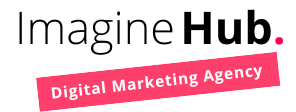
How to do a landing page?
You may have heard about Landing Pages. These types of webpages are created with a specific goal and are made up of various elements that help achieve that goal. They are used in all types of campaigns and sectors and can be created on different platforms, paid and free. If you want to know how to make a landing page you must first understand what it is, what it is used for and what are the fundamental elements included in it. From there you can understand how to make a landing page and with what systems we can create them.
What is a landing page?
Let’s start with the basics, let’s define a landing page. These types of pages are created specifically for marketing campaigns. It’s called a landing page because it’s where a visitor “lands” after clicking on a link, whether it’s in an email, an SEM campaign, or a social media ad.
Unlike a web page, where the services are explained and the visitors are encouraged to navigate throughout the page, the landing pages are designed with a single objective: to complete a specific action. This action can be for the user to make a call or for the visitor to fill out a form. That is why making a specific landing page for each campaign will help increase the conversion rate and reduce the cost of acquiring a potential customer.
How to make landing page
What should a landing page include?
Although there is no exact formula to create a perfect landing page, there are rules of thumb to help you make a landing page.
1- Eye Catching and direct titles / headings
2- Benefits of the offer, product or service
3- Call to actions and Buttons
4- Contact Form or Phone link
5- Testimonials
The 5 fundamental elements that all landing pages must have
The titles on the landing pages.
Let’s start with the most important thing, the content. Landing pages are generally used to drive traffic from specific marketing campaigns. Therefore, the content has to be consistent with the advertisement. If we offer women’s shoes in the ad, it doesn’t make much sense to talk about sportswear. On landing pages, try to be as clear, specific and relevant as possible, as the only way to improve conversions is to deliver on what was promised in the ad text once people click on the landing page. .
The title and the main image are the most important section of a landing page, since it is the first element that users see. If you create a compelling and compelling headline, your chances of getting users to stay on the page dramatically increase. The title has to capture the attention of the visitors and encourage them to continue reading. But how can we do it? Include these three elements in your headlines:
- Benefits to the user
- Relate to your buyer persona
- Tell the user what he / she has to do
Benefits of the product / service / offer.
Today there are thousands of offers of all kinds of products online so we have to show that what we are offering is different and BETTER. When describing the product or offer we must give its characteristics but at the same time describe the impact that the product has on the user.
Calls to action with eye-catching buttons.
The buttons that are included in the landing pages are key to increasing the conversion rate. First of all, it should be easy for the user to convert. That is why large and eye-catching buttons that include keywords such as “Free”, “New”, “Buy” can help in conversion. It is also recommended to include several buttons on the page to facilitate access to the form or telephone.
Contact form or Link to the phone.
Landing pages usually collect user information but we always recommend asking for enough by keeping it as short as possible and always include the privacy statement to comply with GDPR regulations. The form button, believe it or not, also affects the action. Avoid the typical ones: “CLICK HERE” or “SEND”. Instead, use buttons such as “GET 50% DISCOUNT ON YOUR PURCHASE NOW” or “WE WILL CALL YOU SHORTLY”.
Trust element.
Sometimes people need one more push to make a decision. If we are interacting with a brand for the first time, we need something “human” that the brand recommends. Take for example Booking or AirBnB, one of the (many) reasons why people keep booking on portals like these is because they have the possibility to see the opinions of customers and it gives a little more reliability when making a reservation. When we hire a service or buy a product, the same thing happens. By seeing comments from other users or by seeing that they belong to an association or that they have worked with well-known brands, the user is more likely to take the action and request information or make the call.
Trust items can be included in many ways:
- Client testimonials
- Case studies
- Video interviews
- Client Logos
- Review in Yelp
Additional suggestion.
Landing pages have a single objective that is to make users take an action, which is why we should never send them off the page.
Tools to create landing pages
If you want to know how to make a landing page, we recommend that you visit the pages of these tools. Some are free and others are paid, but all offer alternatives to make pages that will help you capture leads:
Mailchimp: Today Mailchimp is not just an email marketing tool. It has developed functions that allow you to automate and generate leads (through its landing pages). On this page they explain step by step how to create a landing page with Mailchimp.
HubSpot: If you already use this powerful sales and marketing tool, you don’t have to look elsewhere. Hubspot allows you to create landing pages from scratch or has a series of predefined templates that you can then customize according to your needs.
Unbounce: This payment tool is one of the best for making landing pages. It has more than 100 templates designed to help you get leads, all you have to do is replace the modules and include the content. This tool costs $ 80 per month and allows you to get up to 500 conversions.
Instapage: Another tool for creating landing pages. It is a bit more expensive than Unbounce but it is intended for companies that need more than one landing page or are running multiple campaigns. Everything is assembled on a block basis, which makes it possible to create a page relatively quickly. It costs $ 199 per month but you can make all the pages you want with no conversion limit.
WordPress: With this CMS you can not only create landing pages, you can also create complex web pages. We like it because the CRM forms that one prefers can be integrated and the graphic aspects of the page can be worked on in more detail. You can also integrate video or interactive functionalities, according to the client’s need or the objective of the campaign.
If you want to know how to make a landing page, we have already given you the basic information. You already know the purpose of a landing page, what it should have and where to make it. Always remember to have a clear objective and striking content and if you have doubts about executing it, you already know where to contact us.




